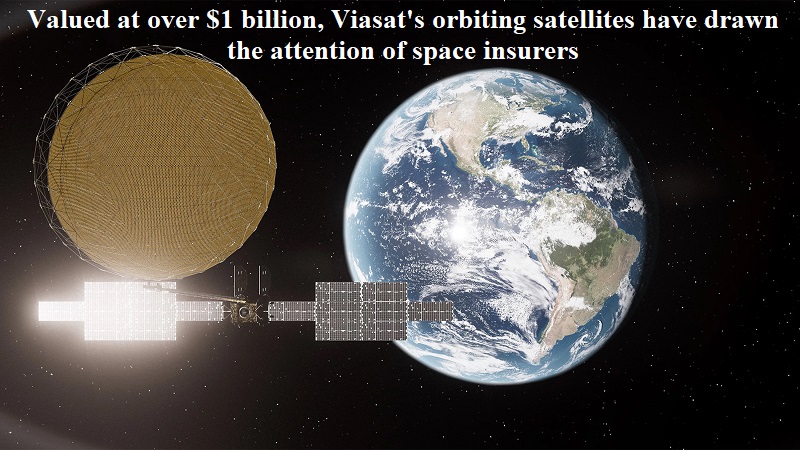
Viasat’s orbiting satellites, valued at a sum exceeding $1 billion, have garnered the attention of space insurance providers who are bracing themselves for potential substantial claims.
The company’s crucial $1 billion ViaSat-3 Americas satellite, designed to expand its fixed-broadband coverage and compete with rivals like Elon Musk’s Starlink, encountered an unexpected complication while deploying its space antenna back in April.
Should Viasat classify it as a total loss, industry experts anticipate the resulting claim could reach an unprecedented $420 million, consequently making it more challenging and costly for other satellite operators to secure insurance. Given the financial risk tied to insuring a high-cost satellite, it’s likely that ViaSat-3 benefits from insurance coverage provided by multiple providers.
Denis Bensoussan, who oversees satellite insurance at Beazley Insurance, was quoted in The Seattle Times, stating, “No single insurer wants to take the risk by itself; no other big insurer was prepared to openly reveal its involvement as a satellite underwriter.”
Adding to its troubles, Viasat recently reported another impaired spacecraft. Its Inmarsat-6 F2 satellite, launched in February, is grappling with a power issue. Space Intel Report highlighted that this failure might mark the end of the satellite’s functional life and trigger a $350 million insurance claim.
Viasat’s orbital difficulties come in the wake of major insurers like American International Group and Allianz SE scaling down their space portfolios in recent years. Consequently, the $553 million market now has a narrower array of suppliers to bear the associated risks.
While prominent telecommunications firms with multimillion-dollar satellites continue to seek coverage, other space players, such as Musk’s SpaceX, focusing on deploying numerous smaller satellites into low Earth orbit, opt out. To them, losing a single satellite bears minimal impact.
Viasat executives have refrained from speculating on the possibility of litigation at this early stage. CEO Mark Dankberg stated, “We can take another couple or three months to obtain accurate measurements and then make those decisions without any consequences,” during an earnings call on August 9. Despite better-than-expected quarterly earnings, investors remain concerned. Viasat’s stock plummeted by 28 percent in a single day after the ViaSat-3 issue was disclosed in July. Company officials projected that the satellite problem would impede growth in 2025, primarily affecting its fixed-broadband service, which constitutes around 13 percent of its revenue.
In the previous month, analyst Louie DiPalma from William Blair informed clients that ViaSat-2, launched in 2017, also experienced an antenna anomaly, resulting in a $188 million claim.
DiPalma noted that in light of the Inmarsat-6 setback, both Viasat and other industry players would likely face significant challenges in obtaining insurance for upcoming satellite launches.

Post Your Comments